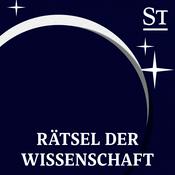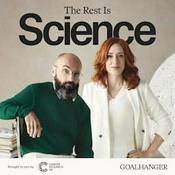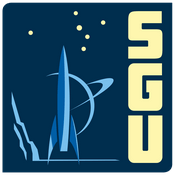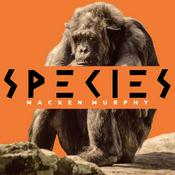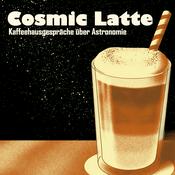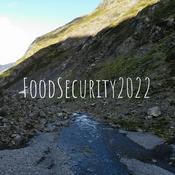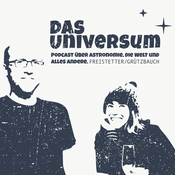1090 Episoden

Super Kilonova Surprise: Unravelling the Mystery of Cosmic Explosions
26.12.2025 | 28 Min.
In this episode of SpaceTime, we uncover groundbreaking astronomical events and the latest advancements in space exploration.First Ever Super Kilonova DetectedAstronomers have made a significant discovery with the potential detection of the first ever super kilonova explosion. This extraordinary event, cataloged as AT 2025ULZ, is believed to have been triggered by a double supernova explosion, producing both gravitational waves and electromagnetic radiation. Lead author Manzi Kasliwal from Caltech's Palomar Observatory discusses how this unique phenomenon could reshape our understanding of stellar evolution and the formation of heavy elements in the universe. With only one confirmed kilonova event to date, this new discovery presents an exciting opportunity to explore the complexities of cosmic explosions.Blue Ghost 2 Spacecraft Shake TestFirefly Aerospace's Blue Ghost Mission 2 spacecraft has undergone rigorous shake testing at NASA's Environmental Test Laboratory. This critical assessment simulates the intense vibrations and acoustics experienced during launch, ensuring the spacecraft can withstand the harsh conditions of a rocket ascent. JPL engineer Michael Williams explains the importance of these tests in preparing spacecraft for successful missions, as the Blue Ghost 2 aims to deliver multiple payloads to the lunar far side next year.Shenzhou 20 Capsule Returns SafelyChina's Shenzhou 20 spacecraft has successfully completed an unmanned return to Earth after sustaining damage from space debris. Initially intended to bring a crew of Tigernauts back home, mission managers opted for a safe return without the crew due to concerns over a crack in the capsule's viewport. This decision highlights the importance of safety in space missions, while also providing valuable data for future flights.www.spacetimewithstuartgary.com✍️ Episode ReferencesAstrophysical Journal LettersNASA ReportsNature CommunicationsBecome a supporter of this podcast: https://www.spreaker.com/podcast/spacetime-your-guide-to-space-astronomy--2458531/support.(00:00:00) This is Space Time Series 28, Episode 152 for broadcast on 26 December 2025(00:00:47) Astronomers detect what could be the first ever super kilonova explosion(00:15:30) Firefly Aerospace's Blue Ghost 2 spacecraft undergoes shake testing at NASA's JPL(00:20:10) China's Shenzhou 20 capsule returns safely to Earth after damage from space debris(00:25:00) New study reveals the benefits of swearing during physical exertion

Martian Moves: Perseverance's Journey and Fashionable Microbes in Space
24.12.2025 | 23 Min.
In this episode of SpaceTime, we explore significant advancements in space exploration and innovative scientific projects.Perseverance Rover's New JourneyAfter nearly five years on Mars, NASA's Perseverance Rover is on the move again, heading to a new site on the rim of Jezero Crater named Lac du Charm. Having traversed over 40 kilometres and collected vital rock core samples, the rover is undergoing extensive evaluations to ensure its longevity, with engineers confident it can operate until at least 2031. We discuss the rover's advanced autonomous driving capabilities and its mission to uncover signs of past microbial life.Fashion Meets Science: Microbial FabricsA groundbreaking project is set to merge fashion and science by sending specially designed fabrics made from bacteria into space. These innovative materials will change colour in response to radiation exposure, potentially protecting astronauts from harmful levels of UV radiation and offering new applications for skin cancer prevention on Earth. Lead researcher Giles Ballet shares insights into how this technology could revolutionise both space exploration and everyday fashion.Expedition 73 Crew ReturnsThe Expedition 73 astronauts have safely returned to Earth after an eight-month mission aboard the International Space Station. Their journey has contributed to over 250 experiments, including advancements in bioprinting and remote robotic operations. We also discuss the implications of recent challenges faced by Russia's manned space program.www.spacetimewithstuartgary.com✍️ Episode ReferencesJournal of ScienceNASA ReportsNature CommunicationsBecome a supporter of this podcast: https://www.spreaker.com/podcast/spacetime-your-guide-to-space-astronomy--2458531/support.(00:00:00) This is Space Time Series 28, Episode 151 for broadcast on 24 December 2025(00:00:47) NASA's Perseverance Rover begins a new journey on Mars(00:12:30) Innovative microbial fabrics set to be tested in space(00:19:15) Expedition 73 crew returns safely to Earth after eight months in orbit(00:24:05) New study suggests humans have been using fire for 400,000 years(00:27:30) Technology tips for buying the right printer for your needs

Stellar Ballet: Apep's Cosmic Dance and Titan's Liquid Mystery
22.12.2025 | 26 Min.
SpaceTime with Stuart Gary Gary - Series 28 Episode 150In this episode of SpaceTime, we delve into intriguing discoveries and ongoing challenges in the realm of astrophysics and planetary science.Cosmic Dance of Dying StarsAstronomers have made fascinating observations of a unique star system named Apep, located over 8,000 light years away in the constellation Norma. This rare system consists of three massive stars locked in a 190-year orbit, creating stunning spirals of cosmic dust. Using the advanced capabilities of NASA's Webb Space Telescope and the Very Large Telescope in Chile, researchers captured extraordinary images revealing four distinct dust shells spiraling outward from the stars. Lead author Ryan White from Macquarie University discusses how these findings enhance our understanding of stellar interactions and the evolution of massive stars over time.Titan's Liquid Ocean: A New PerspectiveA recent study challenges the long-held belief that Saturn's largest moon, Titan, harbors a vast underground ocean. Instead, researchers suggest that Titan may have a more complex internal structure characterized by slushy tunnels and pockets of meltwater rather than a global liquid water ocean. This revelation, based on a reanalysis of data from NASA's Cassini mission, could have significant implications for the search for potential life on Titan, indicating that any existing life forms might inhabit a more confined environment with concentrated nutrients.NASA's MAVEN: Communication ChallengesMission managers at NASA are working diligently to restore contact with the Mars Atmosphere and Volatile Evolution (MAVEN) spacecraft, which went silent during a routine pass behind Mars on December 6. Engineers are analyzing data from before the loss of signal to identify the cause and determine if the spacecraft can be salvaged. MAVEN has been crucial for studying Mars' atmosphere and has served as a vital communications relay for surface missions.www.spacetimewithstuartgary.com✍️ Episode ReferencesAstrophysical JournalNatureNASA TVBecome a supporter of this podcast: https://www.spreaker.com/podcast/spacetime-your-guide-to-space-astronomy--2458531/support.(00:00:00) This is space time series 28 episode 150 for broadcast on 22nd December 2025(00:00:47) NASA's Webb Space Telescope reveals four spectacular dust shells from distant star system(00:10:58) New study says Titan probably doesn't have a vast underground liquid water ocean(00:15:57) NASA mission managers continue efforts to restore contact with missing maven spacecraft(00:18:36) New study finds shared genetic patterns across 14 common psychiatric disorders(00:20:56) A new study claims acupuncture treatment for lower back pain reduces pain

Cosmic Milestones: The Earliest Supernova and Martian Water Mysteries
19.12.2025 | 19 Min.
In this episode of SpaceTime, we uncover groundbreaking discoveries and exciting celestial events that illuminate our understanding of the universe.Earliest Supernova Ever DetectedAstronomers have achieved a remarkable milestone by detecting the earliest supernova ever observed, dating back to a mere 730 million years after the Big Bang. Using the powerful Webb Space Telescope, this supernova, cataloged as GRB250314A, emitted a gamma ray burst that has shattered previous distance records. Lead author Andrew Levin shares insights into how this discovery provides a glimpse into the universe when it was only 5% of its current age, revealing surprising similarities with modern supernovae despite the vast differences in their epochs.Liquid Water on Mars: New EvidenceNew seismic data from NASA's Mars InSight lander suggests that liquid water could still exist beneath the Martian surface, potentially providing a habitat for microbial life. The analysis of marsquakes has revealed boundaries in the Martian crust that indicate the presence of water-filled cracks, offering compelling evidence that life may persist on the Red Planet. We discuss the implications of these findings and the methodologies used to analyze the Martian subsurface.The Great Geminids Meteor Shower of 2025The annual Geminid meteor shower is reaching its peak, presenting stargazers with the chance to witness up to 100 meteors per hour under optimal conditions. Unlike many meteor showers that originate from comets, the Geminids are unique as they come from the asteroid 3200 Phaethon. Dr. Robert Massey provides tips on how to best observe this spectacular celestial event, emphasizing the importance of dark skies and the naked eye for optimal viewing.www.spacetimewithstuartgary.com✍️ Episode ReferencesAstronomy and AstrophysicsBritish Medical JournalNature CommunicationsBecome a supporter of this podcast: https://www.spreaker.com/podcast/spacetime-your-guide-to-space-astronomy--2458531/support.(00:00:00) New clues suggest that liquid water could still exist on Mars today(00:00:48) Astronomers have detected the earliest supernova ever seen using the Webb Space Telescope(00:05:10) New study based on seismic data suggests liquid water may still exist on Mars(00:09:12) The Geminids are visible between now and December 20th(00:13:10) New study finds coffee may slow down biological aging of people with mental illnesses

Gamma Ray Revolution: The Longest Burst and Cosmic Mysteries Unveiled
17.12.2025 | 27 Min.
SpaceTime with Stuart Gary Gary - Series 28 Episode 147In this episode of SpaceTime, we delve into remarkable discoveries that significantly enhance our understanding of the cosmos.Longest Gamma Ray Burst Ever DetectedAstronomers have made headlines with the discovery of the longest gamma ray burst ever recorded, GRB 250702B, which lasted over seven hours. This unprecedented event is reshaping our understanding of stellar explosions and their aftermath. Initial observations indicate that this extraordinary burst may have originated from a black hole consuming a star, prompting new theories about the mechanisms behind these powerful cosmic phenomena. We explore the implications of this finding and how it challenges existing models of gamma ray bursts.Elemental Bounty in Supernova RemnantFor the first time, scientists have detected chlorine and potassium in the remnants of the supernova Cassiopeia A, utilizing the advanced capabilities of the CRISM spacecraft. This discovery sheds light on the elemental processes that occur during stellar explosions and their connection to the formation of elements crucial for life on Earth. We discuss the significance of these findings and their impact on our understanding of stellar nucleosynthesis.International Space Station Fully OccupiedIn a historic first, the International Space Station has reached full capacity, with all eight of its docking ports in use. We discuss the implications of this milestone, including the logistics of managing multiple spacecraft and the ongoing missions currently underway aboard the ISS.www.spacetimewithstuartgary.com✍️ Episode ReferencesMonthly Notices of the Royal Astronomical SocietyAstrophysical Journal LettersNature AstronomyBecome a supporter of this podcast: https://www.spreaker.com/podcast/spacetime-your-guide-to-space-astronomy--2458531/support.(00:00:00) This is space Time Series 28, Episode 147 full broadcast on 17 December 2025(00:00:47) Astronomers have detected the longest gamma ray burst ever detected(00:11:11) Astronomers have detected chlorine and potassium in a supernova remnant(00:18:27) International Space Station is fully occupied with all eight docking ports now in use(00:20:05) New study claims flavonoids may help improve insulin resistance(00:24:58) You're a multiple award winner. You've won in creative writing and controversy(00:26:05) Space Time is available every Monday, Wednesday and Friday through bitesz. com
Weitere Wissenschaft Podcasts
Trending Wissenschaft Podcasts
Über SpaceTime with Stuart Gary
Höre SpaceTime with Stuart Gary, ZEIT WISSEN. Woher weißt Du das? und viele andere Podcasts aus aller Welt mit der radio.at-App
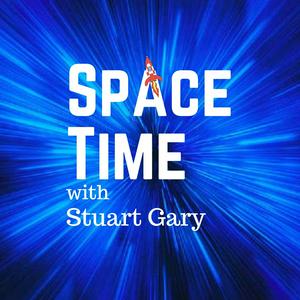
Hol dir die kostenlose radio.at App
- Sender und Podcasts favorisieren
- Streamen via Wifi oder Bluetooth
- Unterstützt Carplay & Android Auto
- viele weitere App Funktionen
Hol dir die kostenlose radio.at App
- Sender und Podcasts favorisieren
- Streamen via Wifi oder Bluetooth
- Unterstützt Carplay & Android Auto
- viele weitere App Funktionen


SpaceTime with Stuart Gary
App laden,
loshören.







